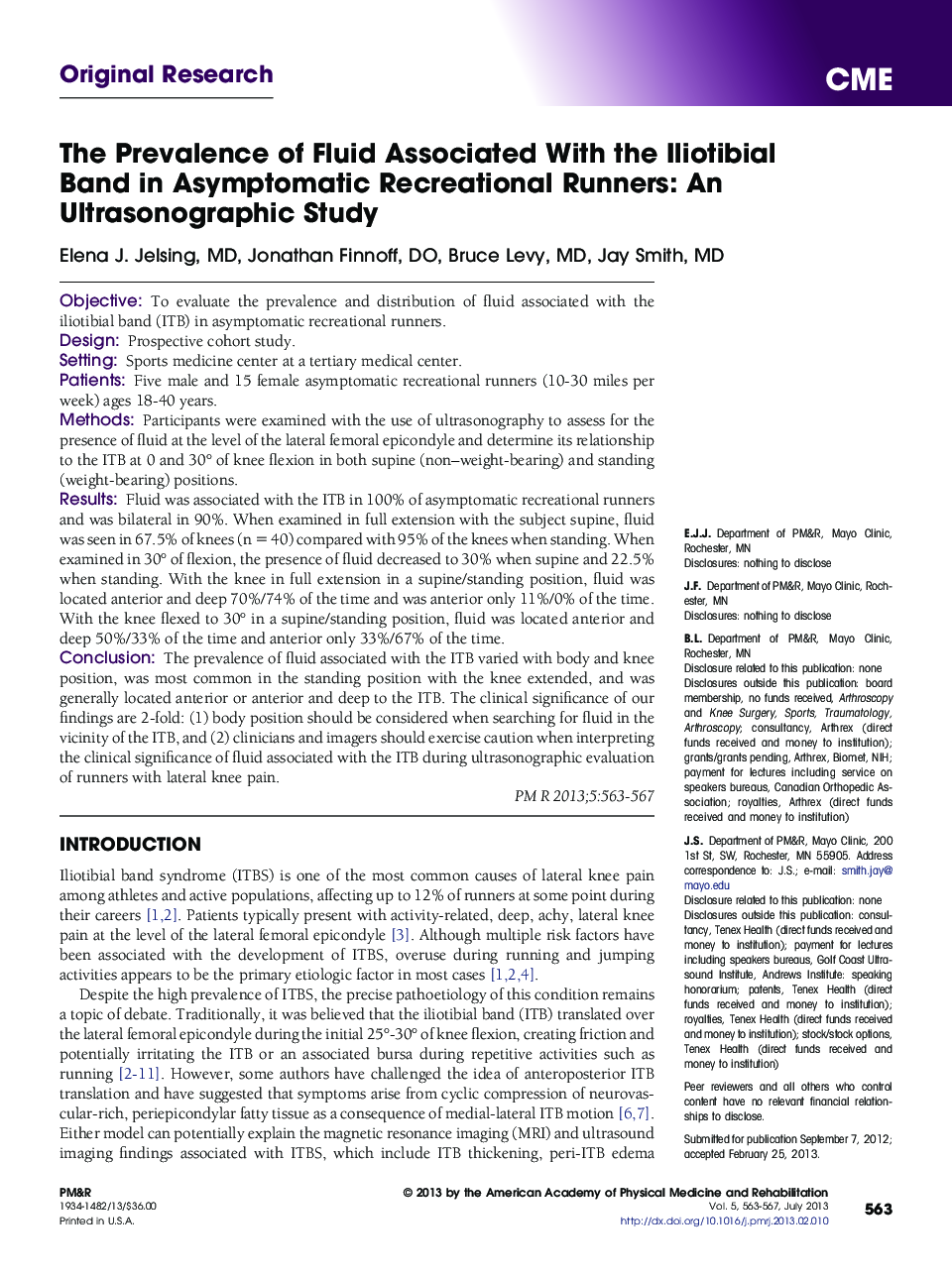| Article ID | Journal | Published Year | Pages | File Type |
|---|---|---|---|---|
| 2705695 | PM&R | 2013 | 5 Pages |
ObjectiveTo evaluate the prevalence and distribution of fluid associated with the iliotibial band (ITB) in asymptomatic recreational runners.DesignProspective cohort study.SettingSports medicine center at a tertiary medical center.PatientsFive male and 15 female asymptomatic recreational runners (10-30 miles per week) ages 18-40 years.MethodsParticipants were examined with the use of ultrasonography to assess for the presence of fluid at the level of the lateral femoral epicondyle and determine its relationship to the ITB at 0 and 30° of knee flexion in both supine (non–weight-bearing) and standing (weight-bearing) positions.ResultsFluid was associated with the ITB in 100% of asymptomatic recreational runners and was bilateral in 90%. When examined in full extension with the subject supine, fluid was seen in 67.5% of knees (n = 40) compared with 95% of the knees when standing. When examined in 30° of flexion, the presence of fluid decreased to 30% when supine and 22.5% when standing. With the knee in full extension in a supine/standing position, fluid was located anterior and deep 70%/74% of the time and was anterior only 11%/0% of the time. With the knee flexed to 30° in a supine/standing position, fluid was located anterior and deep 50%/33% of the time and anterior only 33%/67% of the time.ConclusionThe prevalence of fluid associated with the ITB varied with body and knee position, was most common in the standing position with the knee extended, and was generally located anterior or anterior and deep to the ITB. The clinical significance of our findings are 2-fold: (1) body position should be considered when searching for fluid in the vicinity of the ITB, and (2) clinicians and imagers should exercise caution when interpreting the clinical significance of fluid associated with the ITB during ultrasonographic evaluation of runners with lateral knee pain.
